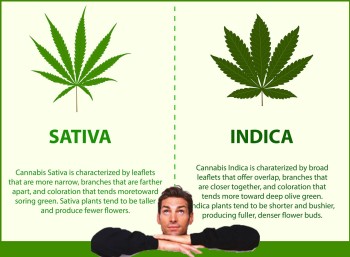
Newly released survey data indicates that over 50% of individuals who consume cannabis in states where its use is legal prefer to obtain their products from licensed dispensaries.
According to the latest survey conducted by New Frontier Data, it was revealed that in states where adult-use marijuana is legal, 52% of current cannabis consumers rely on brick-and-mortar dispensaries as their primary source. Only 6% rely on traditional dealers.
Brick-and-Mortar Dispensary See More Patronage
The survey revealed that 43% of all current consumers now consider a brick-and-mortar dispensary as their primary source, marking a notable rise from the 34% reported in 2022. Conversely, the reliance on traditional dealers has decreased, with only 10% of current consumers stating them as their primary source, down from 13% in 2022.
In the survey analysis, Dr. Amanda Reiman, the chief knowledge officer at New Frontier Data, highlighted an intriguing trend. Among current consumers in illicit markets, it was found that 29% of them consider brick-and-mortar dispensaries as their primary source, whereas 17% still rely on traditional dealers.
This suggests that even in illicit markets, consumers are willing to travel across state lines to obtain cannabis from regulated sources. Remarkably, 42% of consumers reported that they had sourced cannabis from out of state, as stated by Dr. Amanda Reiman in the survey's analysis.
The wave of normalization surrounding recreational cannabis has led dozens of states, along with the District of Columbia, to legalize its use for adults. As a result, shopping for weed has become similar to a routine visit to a drug store or supermarket. According to Reiman, cannabis has, in numerous ways and locations, transformed into just another errand to run.
Reiman noted that the resemblance to traditional commerce goes beyond the sourcing of cannabis; even the factors influencing consumer choices have aligned with mainstream preferences. The primary reasons consumers pick a specific brick-and-mortar dispensary include product quality, price, selection, convenient location, and knowledgeable staff. These reasons closely parallel the factors influencing people's choice of grocery stores.
The sourcing data reveals a lingering aspect of the prohibition era, where consumers cite familiarity as the critical reason for repeatedly choosing the same businesses. 58% of consumers identified familiarity as the primary factor influencing their loyalty to a particular store. Nearly two decades ago, I conducted a study involving medical cannabis patients and posed a similar question regarding their preferred medical cannabis dispensary.
Additionally, familiarity emerged as the leading factor among consumers. During the prohibition era, obtaining cannabis involved a set of rules, including limitations on what could be said, proper payment methods, and how to communicate with dealers, all while risking potential arrests. Being well-versed in these rules and understanding what was expected was integral to the purchase process.
To some extent, that underlying anxiety has persisted among specific consumers even after legalization. Despite purchasing cannabis in a legal market, they might still experience a lingering sense of wrongdoing and adhere to specific protocols. However, as the legal market continues to evolve, that familiarity will likely become less significant, and other factors, such as convenient location, product selection, and knowledgeable staff, will take on greater importance for consumers in terms of loyalty.
Reiman further emphasized that the upward trend of consumers opting for brick-and-mortar dispensaries will persist as more legal markets emerge. Even individuals in illicit markets will gain increased access to legal stores. Over time, consumers will gradually embrace the new reality of perceiving cannabis as a consumer-packaged good.
Cannabis & U.S. Adults
In a recent press release, Gary Allen, CEO of New Frontier Data, highlighted that over 42% of adults who have previously consumed cannabis express intentions to use it again. Allen further emphasized that cannabis consumers encompass diverse genders, age groups, political affiliations, and economic backgrounds.
The rise in cannabis use can be ascribed to Americans' increased acceptance and openness to the drug. Due to this, numerous opportunities now exist in developing and new markets.
One important result emphasized in the paper is the rise in cannabis use over the last four years. According to the report, cannabis use among people aged 65 and up has increased by 96%. Cannabis use increased by 64% among people aged 40 to 44. According to the research, cannabis use grew across all age categories except for teens aged 18 to 20.
With growing legalization, around 74% of Americans now live in a state where cannabis is legal for medical or adult use. Of the 74%, 48% live in states that allow adult cannabis usage, while 26% reside in states that exclusively allow medicinal cannabis use.
According to 2022 data on the legal cannabis industry in the United States, cannabis buds are the most popular among cannabis consumers, accounting for 43% of sales. With a 29% market share, vape comes in second, followed by edibles and drinks (11%) and extracts (9%). The remaining 1% comprises tinctures, topicals, and other items.
Examining the racial and ethnic diversity among cannabis consumers provides intriguing insights based on the data. In the United States, cannabis consumers comprise various racial and ethnic backgrounds, including white (63%), Black (14%), Hispanic/Latinx (14%), Asian (3%), Mixed/multi-racial (4%), and Other (2%). In terms of gender distribution, men make up a slightly higher percentage, representing 54% of the population, while women account for the remaining 46%.
Conclusion
The survey results and research offer insight into the changing picture of marijuana use in the U.S. With the legalization of cannabis for recreational use in several places; consumers now prefer brick-and-mortar dispensaries as their main supplier. Elements like familiarity, convenience, product quality, and competent staff now drive consumer loyalty in this burgeoning business.
The data also shows how Americans' attitudes toward and acceptance of cannabis use are evolving. Increased acceptability and openness in society are to blame for the surge in cannabis use. The report shows a notable rise in cannabis use across older age groups, signaling a change in attitudes and a growing market demographic.
Overall, the research provides valuable insights into the changing landscape of cannabis consumption, paving the way for future developments, regulations, and opportunities within the cannabis market.
THE CANNABIS TIPPING POINT, READ ON...
57% OF ADULTS USE OR WANT TO TRY CANNABIS, IS THAT A TIPPING POINT?







